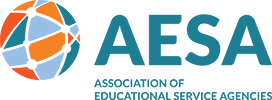By Noelle Ellerson Ng, Associate Executive Director, Policy & Advocacy, AESA
Background: The Universal Service Fund is a $8 billion decades-old mechanism created by Congress in 1996 to support vital communications investments where the marketplace falls short: connecting schools and libraries to high-speed internet; helping rural hospitals adopt telemedicine; ensuring low-income households have basic communications services; and investing in broadband in communities that need it most. As required by law, telecommunications carriers contribute a portion of their revenues to the Universal Service Fund. The Fifth Circuit Court of Appeals recently held that the current administration of the Universal Service Fund is unconstitutional.
AESA responded to the ruling as part of the EdLiNC Coalition in this press release, “We are outraged by the 5th Circuit Court of Appeals’ decision in Consumers’ Research et al. v FCC that the funding mechanism of the Universal Service Fund is unconstitutional. If this decision stands, the E-Rate, Rural Health Care, High Cost and Lifeline programs, which comprise the Universal Service Fund, will come to an abrupt halt. In the case of E-Rate, this decision could lead to cutting off broadband access for tens of millions of students, educators and library patrons. We cannot let that happen."
New Resource: The FCC has released an overview document and state-specific information detailing how each of the four universal service fund programs (including the schools and libraries program, E-Rate) are impacted in each state.
We took the data behind each of the state sheets and compiled them into one excel spreadsheet, to support easier comparison across states and to see all programs at a glance.
You can see that document here. Here is the context for the data:
- The E-Rate data covers 2022-2024 and reports the number of schools and libraries served, funding received, and students served.
- The Rural Health Care data covers 2021-24 and details the amount of funding received and the count of providers participating.
- The Lifeline Program data reports the number of subscribers in the state in March 2024.
- The High Cost Program data reports how much money carriers received to connect rural households in 2023.
Why Does the Universal Service Fund Matter?
- Connecting Schools and Libraries (E-Rate Program):
- From 2022-2024, 106,000 schools and 12,597 libraries received $7,020,502,347 for broadband connectivity and internal connections.
- These programs benefited 54,367,186 students.
- Broadband for Health Care Providers (Rural Health Care Program)
- From 2021-2023, 16,080 health care providers received $1,621,136,341 for connections.
- One hundred seven projects received $98,234,805 for the Connected Care Pilot Program, which explores how the Universal Service Fund can support telehealth beyond brick-and mortar medical facilities.
- Basic Phone and Internet for Low-Income Households (Lifeline Program)
- In March 2024, 7,596,720 subscribers received discounted phone and/or internet service.
- High-Speed Internet in Hard-to-Connect Communities (High-Cost Program)
- In 2023, carriers nationwide received $4,263,186,064 to connect households in the most rural communities.
